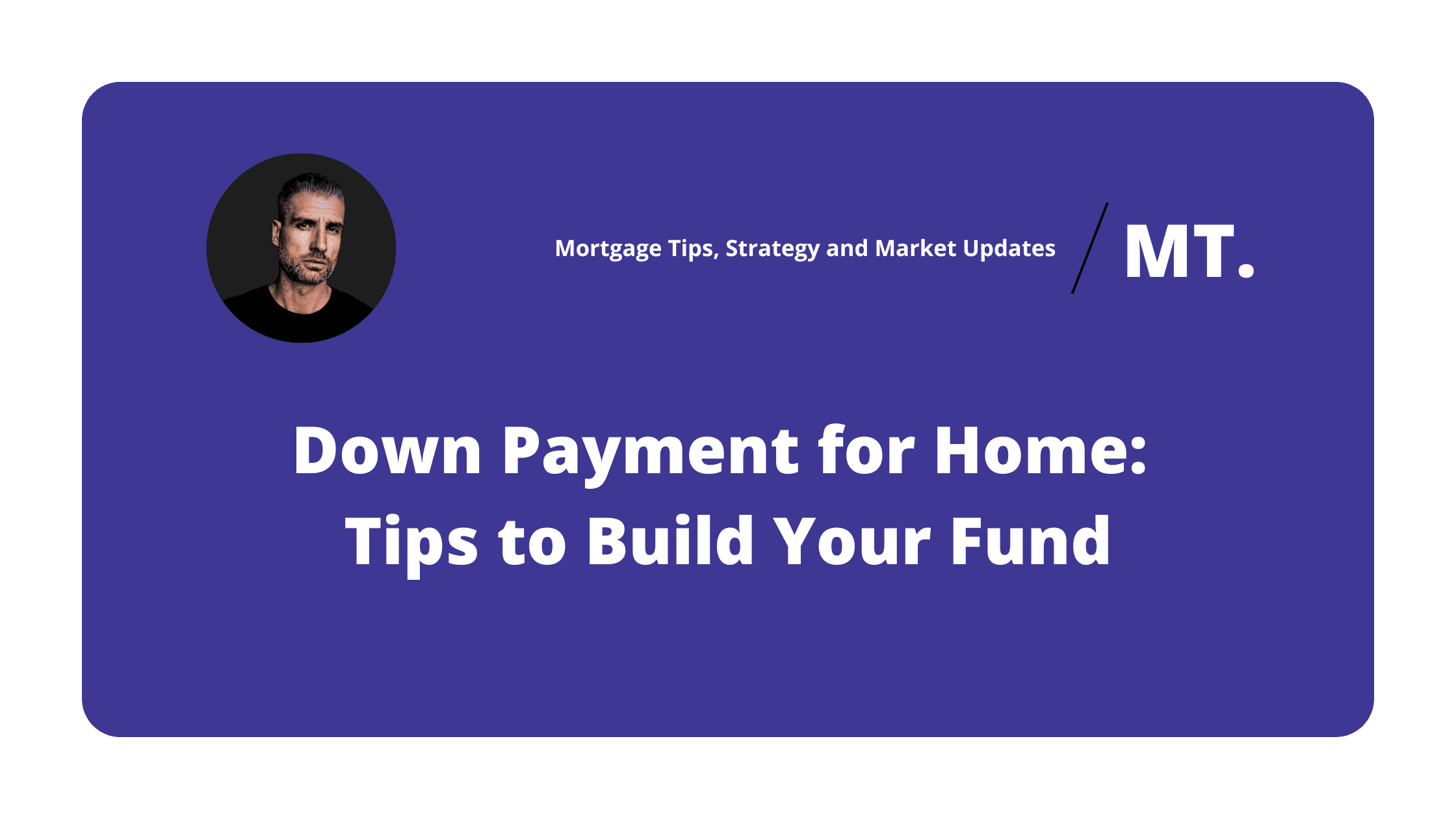Read Time: 3.5 Minutes
Saving tips for a Down Payment for Home
Saving for a down payment for home is a significant step in the journey to homeownership.
Whether you’re a first-time buyer or looking to upgrade, the process can seem daunting.
But, with the right strategies, you can build your down payment fund.
Here are some essential tips to help you reach your goal.
Now, let’s dive in!
How much down payment do you need?
Minimum Required Down Payment Amounts
In Canada, the minimum down payment for home varies based on the home’s purchase price:
- Up to $500,000: Minimum 5% of the purchase price.
- $500,000 to $999,999: 5% of the first $500,000, then 10% for the part above $500,000.
- $1,000,000 and above: Minimum 20% of the purchase price.
Remember, Canada considers anything less than 20% to be high-risk.
High-risk means you need mortgage insurance.
And mortgage insurance means additional costs, and reduced borrowing power.
Closing Costs
You need a down payment.
Also, be ready for closing costs.
They are usually 1.5% to 4% of the purchase price.
These costs include:
- Legal fees ($1000 – $3000)
- Land transfer taxes (Try our calculator)
- Title insurance ($200 and up)
- Home inspection fees ($0 – $1000)
- Appraisal fees ($0 – $1000)
- PST on Mortgage Insurance (if applicable)
Verification of your funds
Lenders need proof of your down payment funds.
They want to ensure the funds are real, enough, and from you.
This includes:
- Bank statements showing saved funds for the past 90 days, cross referencing any large deposits
- Proof of any gifted funds (with a letter stating no repayment is required)
- Confirmation of funds from the sale of assets
Where to Save Your Money?
Saving for a down payment for home can be hard.
But, there are a few government programs to speed up the process using special accounts.
Registered Retirement Savings Plan (RRSP)
The Home Buyers’ Plan (HBP) lets first-time buyers withdraw up to $35,000 from their RRSPs to buy a home.
This withdrawal is tax-free, provided you repay it within 15 years.
Contributions to your RRSP reduce your taxable income during the year of contribution.
This frees up more money to contribute to your savings.
As a couple, this allows you to draw out up to $70,000.
In April 2024, the federal government proposed increasing the limit to $60,000 per person.
For couples, it’s $120,000.
This rule will apply to withdrawals made after April 16, 2024.
Check with your bank to see if the higher limit is in place when you withdraw.
First Home Savings Account (FHSA)
A newer option, the FHSA combines RRSPs and TFSAs.
It lets first-time homebuyers save up to $40,000 for their first home.
Contributions are tax-deductible, like the RRSP.
Withdrawals for qualifying home purchases are tax-free, like a TFSA.
Tax-Free Savings Account (TFSA)
You can’t deduct contributions to a TFSA from your income tax.
But withdrawals, including any gains, are tax-free.
This flexibility makes TFSAs great for saving for a down payment.
This is especially true once you’ve maxed out your contributions to the two options above.
Other Accounts
Consider high-interest savings accounts.
You can also consider guaranteed investment certificates (GICs) to grow your savings safely.
These accounts offer higher interest rates than regular savings accounts.
They also provide security for your funds.
For those who are a bit more comfortable with risk, consider an investment account.
You should also consider a financial advisor.
Returns aren’t guaranteed, but they can be higher than safer options.
Tips for Saving Your Down Payment
Set a Clear Goal
Find out how much you need to save for your down payment.
Consider the home’s price and the extra closing costs.
Setting a clear target gives you something concrete to work towards.
Create a Budget
A detailed budget helps track your income and expenses.
Identify areas to cut back and redirect those savings towards your down payment fund.
This might include eating out less.
It could also mean cancelling unused subscriptions or finding cheaper options.
Cut Unnecessary Expenses
Review your monthly expenses and look for opportunities to save.
Small changes add up.
They include reducing utility usage, limiting discretionary spending, and choosing cheaper entertainment.
Automate Your Savings
Set up automatic transfers from your checking account to your down payment savings account.
Automating your savings ensures consistency.
It helps you stay on track without needing to think about it.
Work with a Financial Advisor
A financial advisor can give you personalised advice.
They can also give you strategies to help you reach your savings goal.
They can help you optimise your budget.
They suggest the best savings accounts and keep you motivated.
Saving for a down payment for home may seem hard. But, with a clear goal, a detailed budget, and the right strategies, you can achieve your dream of owning a home.
By making small sacrifices and using available programs, you’ll be well on your way.
Stay disciplined and you’ll save the funds for your new home.
Remember, every dollar saved brings you one step closer to your goal. Happy saving!
Overview
Subscribe to begin.
Join 7.5k+ subscribers and get tips, strategies and market updates every other Thursday morning.







